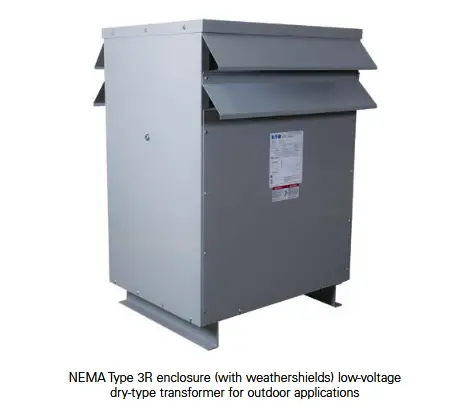Types of Dry Type Medium Voltage Transformers: Benefits and Applications

Transformer have many different applications thanks to their ability to step up (increase) or step down (decrease) electrical voltage. In an electrical network, the primary function of transformers is to increase or decrease currents/voltages.
With numerous different electrical devices or parts available in our homes and businesses, where many of them operate at the same frequency, you can increase or decrease the level of current, while electrical power remains the same, using the right transformer.
Transformers are required for voltage transitions and meeting various other current requirements, including in business premises. They are essential in every electrical network circuitry for purposes like electrical power generation, distribution, and transmission, and transformers are generally very efficient — electricity losses are usually below 1 or 2%.
Different types of transformers are available in the market, but the ‘Dry Type Transformers’ is a popular recommendation as it offers multiple benefits, such as cost-effectiveness, improved efficiency, and advanced safety features.
Dry Type Medium Voltage Transformers
Medium-voltage transformers have a primary rated voltage between 601 V and 35 kV. Dry type medium voltage transformers transfer energy by inductive coupling between its winding circuits.
"Dry type" refers to the type of insulation medium, which means that the coil and core is cooled and insulated by air, as opposed to "liquid-immersed" transformers that use oil as the coolant/insulant.
Dry type medium voltage transformers are widely used in industrial facilities to reduce voltage to the values necessary to power to industrial equipment, lighting, and other products.
Some of the different types of dry type medium voltage transformers include the following:
- Open Wound Transformer
- VPI (Vacuum Pressure Impregnated)
- VPE (Vacuum Pressure Encapsulated)
- Cast Coil
1. Open Wound Transformer
Open wound transformers are a type of transformer that gets its name based on its manufacturing processing method.
This method uses the dip and bake method, where the coils of the transformer are first heated, then dipped in varnish, and ultimately baked as a final process.
2. VPI (Vacuum Pressure Impregnated)
Generally, VPI transformers are appropriate for commercial and industrial needs. Such transformers consist of insulation intended for high temperature.
The designing of VPI transformers can be performed by employing materials that can endure exceptionally high temperatures.
Such transformers also act as a polyester sealant with its moisture-resistant qualities and are generally operated with a vacuum force impregnation plan.
3. VPE (Vacuum Pressure Encapsulated)
VPE transformers are produced with Si-based resin as a replacement for of polyester.
Such transformers produce a thick varnish, which is highly resistant to humidity and is perfect for harsher industrial environments.
4. Cast Coil
Cast coil transformers are reliable in terms of consistency, even during extreme weather conditions.
Additionally, such transformers also require extremely little maintenance and are also resistant to high voltage short circuits.
Due to such features and functionality, cast coil transformers are utilized in the earlier time wherever liquid-filled units were accessible and were meant for harsh environments.
Today, such transformers are employed in ships, subways, nuclear plants, gantries, cranes, and mining businesses.
Benefits of Dry Type Transformers
In general, some expected benefits of dry type transformers are:
- Pollution-free
- Suitable for contaminated and damped environments
- Simple installation
- Durable due to dielectric heating and low thermal functions
- Keeps the property and people protected
- Highly resistant to short circuit currents
- Low side clearance
- Exceptional performance
- High capacity to support overload currents
Applications of Dry Type Transformers
Dry type transformers are pretty versatile, primarily because you can design and customize your transformers as per your business requirements.
Some places where dry type transformers have proved to beneficial are:
- Water protection in sensitive environments and forest units
- Substations of inner cities and underground substations
- Infrastructures such as public or commercial buildings like airports and hospitals
- Small industries such as textile, food, automotive, and pharmaceutics
- O&G industries such as refineries, pipelines, onshore and offshore units
- MMM industries such as smeltery, aluminum, steel factories, and underground mines
Testing of Dry Type Transformers
For dry type transformers, most insulation breakdown incident occurs due to severe faults such as earth leakage faults or phase to phase winding configuration.
For the same, you must approach a licensed and qualified specialist or a leading provider to perform testing of dry type transformers.
Depending on the findings of the tests, you can determine the condition of insulation for varied components such as the windings, core, and bushings.
Some different types of tests include:
- Partial discharge analysis
- Insulation resistance analysis
- Frequency response analysis
- Polarization index analysis
- Thermographic surveys
- Dielectric loss angle Measurement Test
- Acoustic emission analysis
Critical Aspects Regarding Dry Type Transformers before Buying
Before you buy a dry type transformer, you need to find out the requirements for certain critical aspects while choosing suitable dry type transformers, such as:
- Choice of Type of Insulation
- Life Expectancy
- Primary and Core Material Selection
- Less Hysteresis Loss
- Insulation Level
- Costs
- Choice of Winding Material
- Regulation Functions
- K-factor
- Overloading functions
Remember to first consult with a professional, as such critical functions require the backing of a specialist who has extensive domain knowledge and experience. Doing so will help you ensure that you make informed decisions regarding dry type transformers.





















